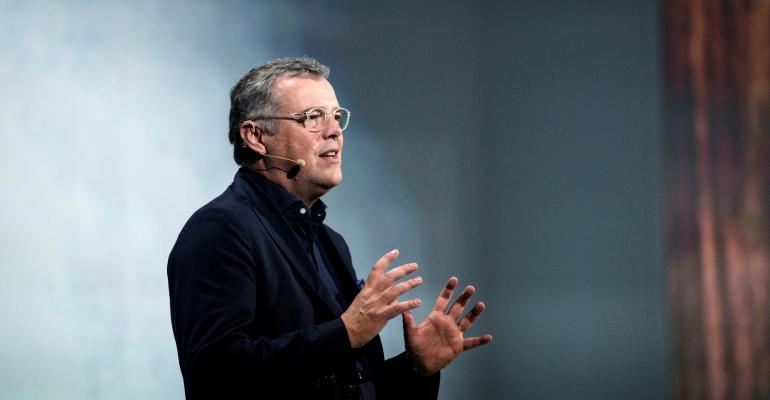DETROIT – Volvo believes its reputation as a leader in safety has slipped in the U.S., and the automaker intends to regain that hard-earned designation.
“It’s fair to say from a perception point of view we may have lost a bit of the (safety) leadership in the U.S. market. Globally that’s not the case,” Alain Visser, Volvo’s sales and marketing chief, tells WardsAuto at the 2015 North American International Auto Show here. “I think that’s more of a communication issue than a product issue. We are strongly convinced we still have leadership in safety.”
The Swedish automaker developed some of the most important automotive safety innovations early in its history, many of which are still used today, including the 3-point safety belt. But now nearly every vehicle, particularly those in the luxury segment, boasts high-tech safety innovations, which has chipped away at Volvo’s reputation as a safety pacesetter.
Add the fact that Volvo is a small player in the global automotive industry and has limited its marketing over the past decade, and it’s clear why its safety reputation has waned.
Visser says the automaker is stepping up its marketing and will tout the upcoming all-new XC90 SUV as both the safest Volvo ever built and the safest in its segment.
“But we don’t think the future of Volvo can be based on safety only,” he says. “You need additional items that really increase the desirability of the brand. But safety will always be a core value of the brand and we want to rebuild our leadership in safety, including in the U.S. market.”
Visser declines to say how much Volvo is upping its marketing budget, but says the increase is needed to meet the automaker’s goal of selling 800,000 units globally by 2020, up from 465,866 in 2014.
To achieve that lofty sales goal, Volvo is relying on a number of new vehicles, including the XC90 and the new Volvo S60 Inscription and Volvo S60 Cross Country that were introduced at the auto show here.
“These two new products, added to the all-new XC90 unveiled (at the Los Angeles auto show), are a further statement of our commitment to turn around our performance in the U.S. Overall, we will launch seven new products in the U.S. by 2018,” says Håkan Samuelsson, president and CEO.
Visser says the automaker intends to cut through traditional automotive marketing clutter with a streamlined sales approach focused on groundbreaking customer-based programs and digital strategies.
“We’re a different brand, a small player and the only Scandinavian brand,” he says. “We’re different, so let’s behave differently, so that’s what we’re starting to do now.”
In addition to altering its marketing tactics, Volvo plans to change the way it sells vehicles. Visser says the automaker is developing a program that allows buyers to purchase a vehicle online, eliminating the need for negotiating at the dealership, a process that research indicates alienates some customers.
The online-purchase program will begin to roll out globally this year, with full implementation set for 2016. But Visser is quick to note the new process does not eliminate the dealer from the purchase process, but rather will add incremental sales to the dealership.
“We don’t think the dealer network is ever going to be replaced,” he says. “I think a car is a very emotional and physical purchase, so I don’t think the whole transaction will be online, but the ordering and buying process can be online. The retailing, the delivery and the servicing we believe will always happen at dealers.”
Volvo’s global growth strategy is aimed primarily at China and the U.S., respectively its top two sales regions.
Visser says of the 800,000-unit sales goal, China will account for about 200,000.
“Last year we did about 82,000 in China, so it’s quite significant growth in the next five years,” he says. In the U.S., Volvo will concentrate marketing efforts in regions where the automaker historically has performed well, Visser says, without revealing what areas will be targeted.
“We think it’s wrong to say, ‘Let’s grow in U.S.,’” he says. “We want to pick our fights and really focus on cities where we believe the Volvo brand has highest relevance and opportunity for growth. We need to have different strategies and even different products in different regions.”
Volvo currently has about 200 dealers in the U.S. and 150 in China. Visser says the number of U.S. dealers is about right, but plans call for expanding the number of Volvo stores in China to about 240, less than in the U.S. despite China being a larger market.
“They’re very different markets. Even though China is huge, they have different requirements,” he says. “We have the right number here and but we need to increase volume. In China to increase volume we need more dealers.”





